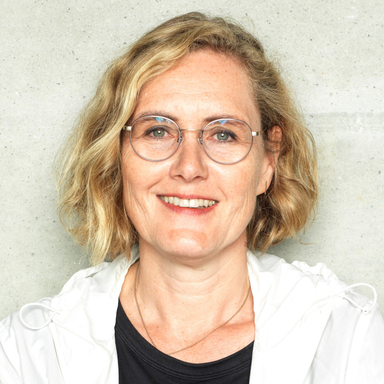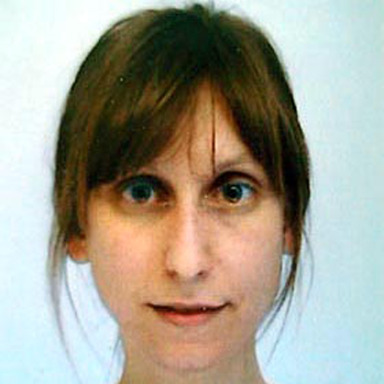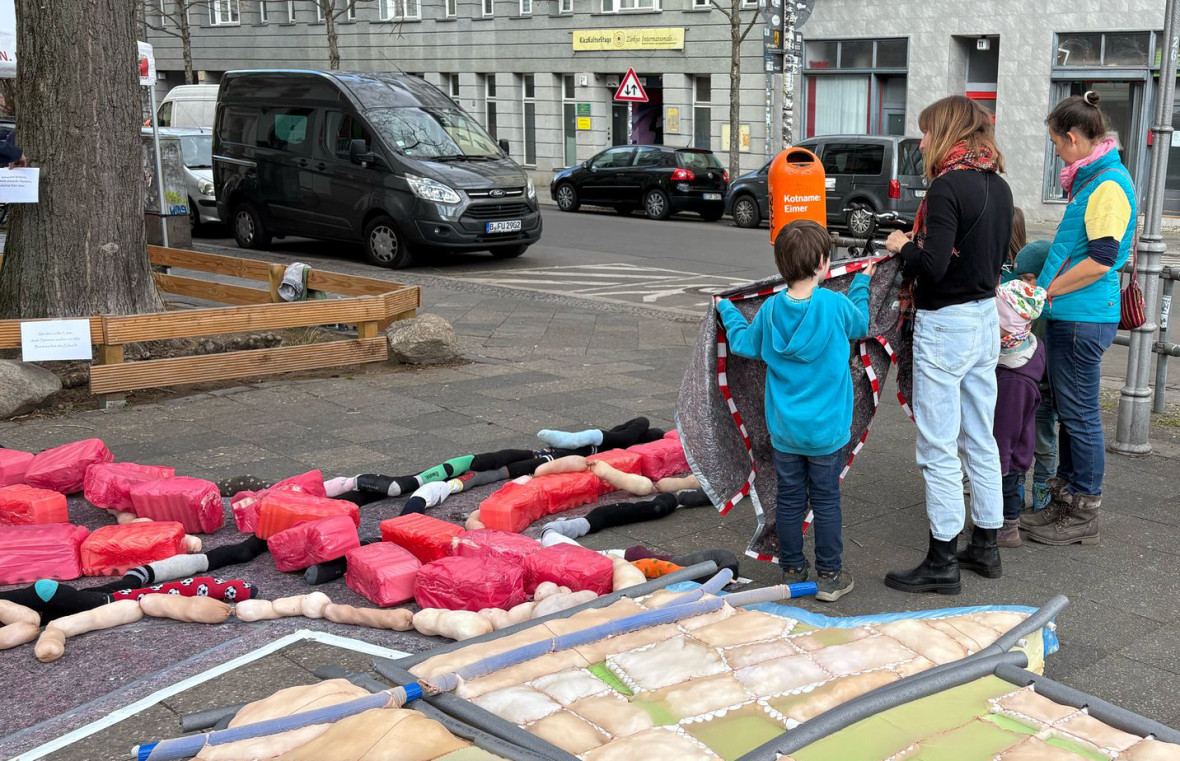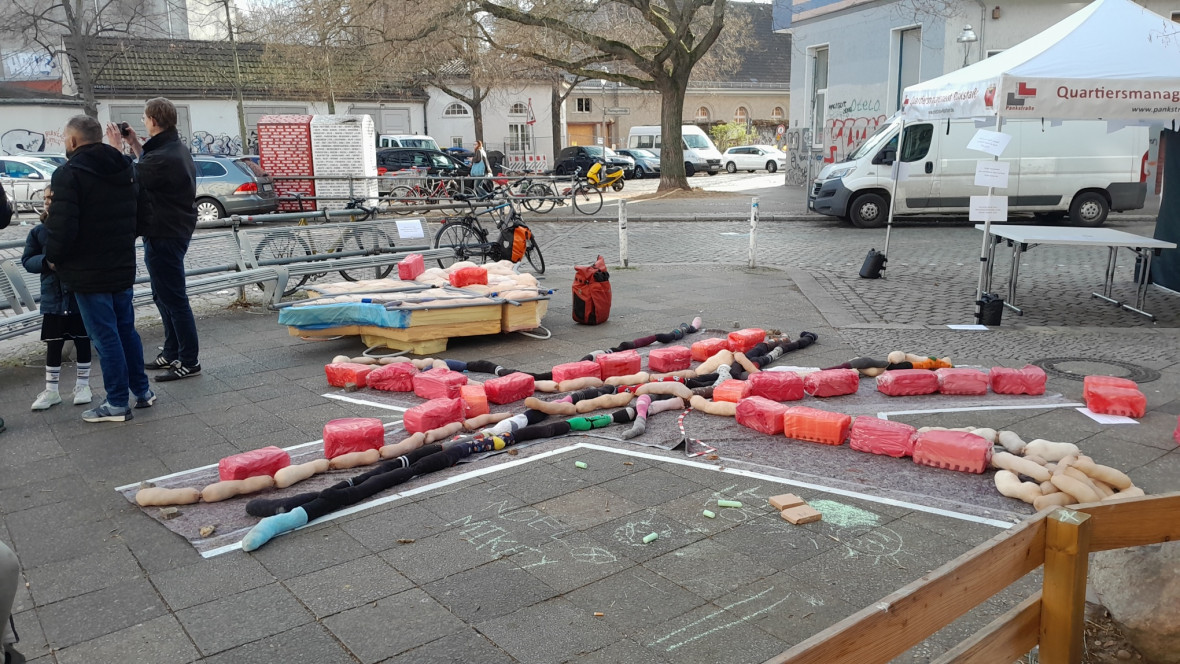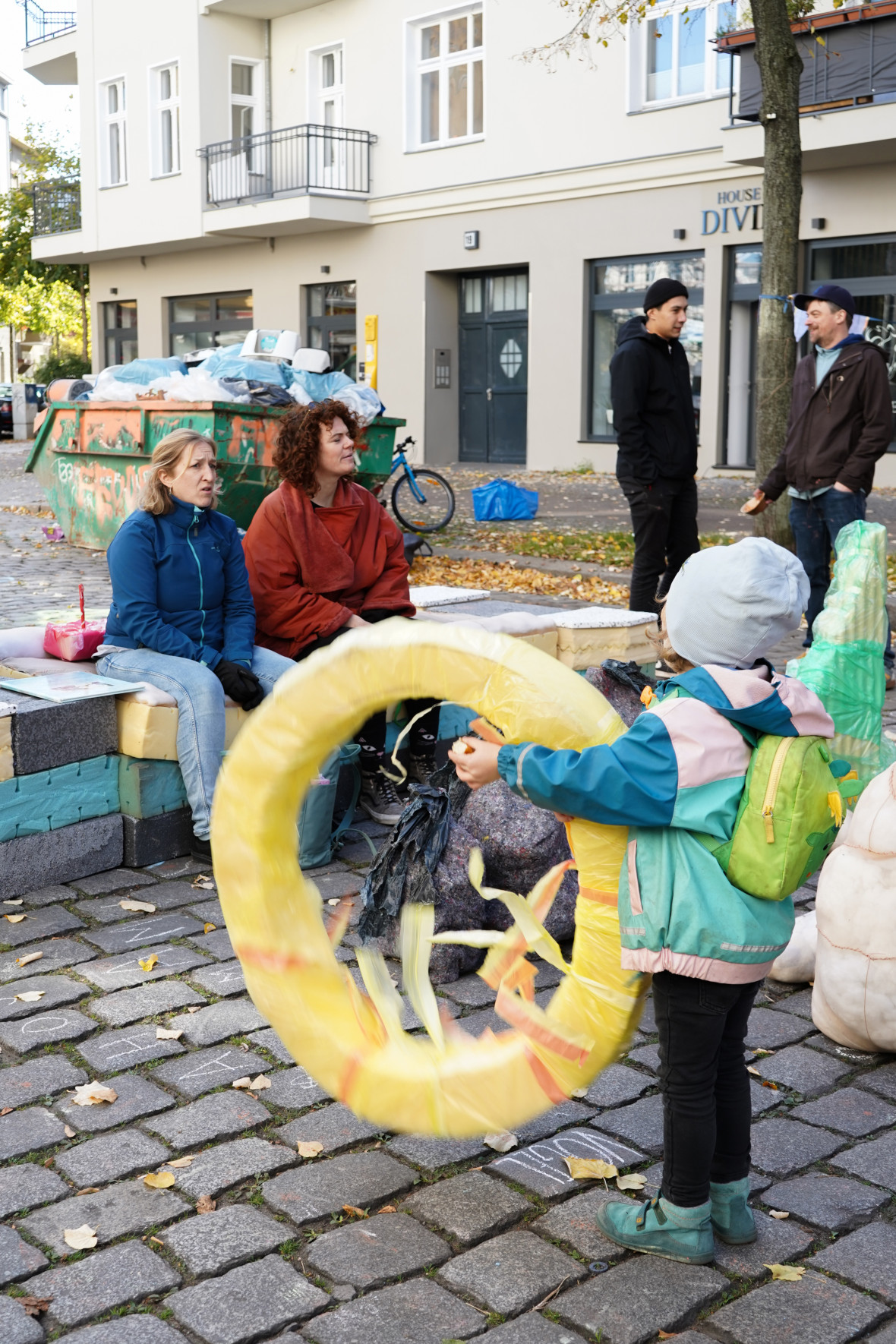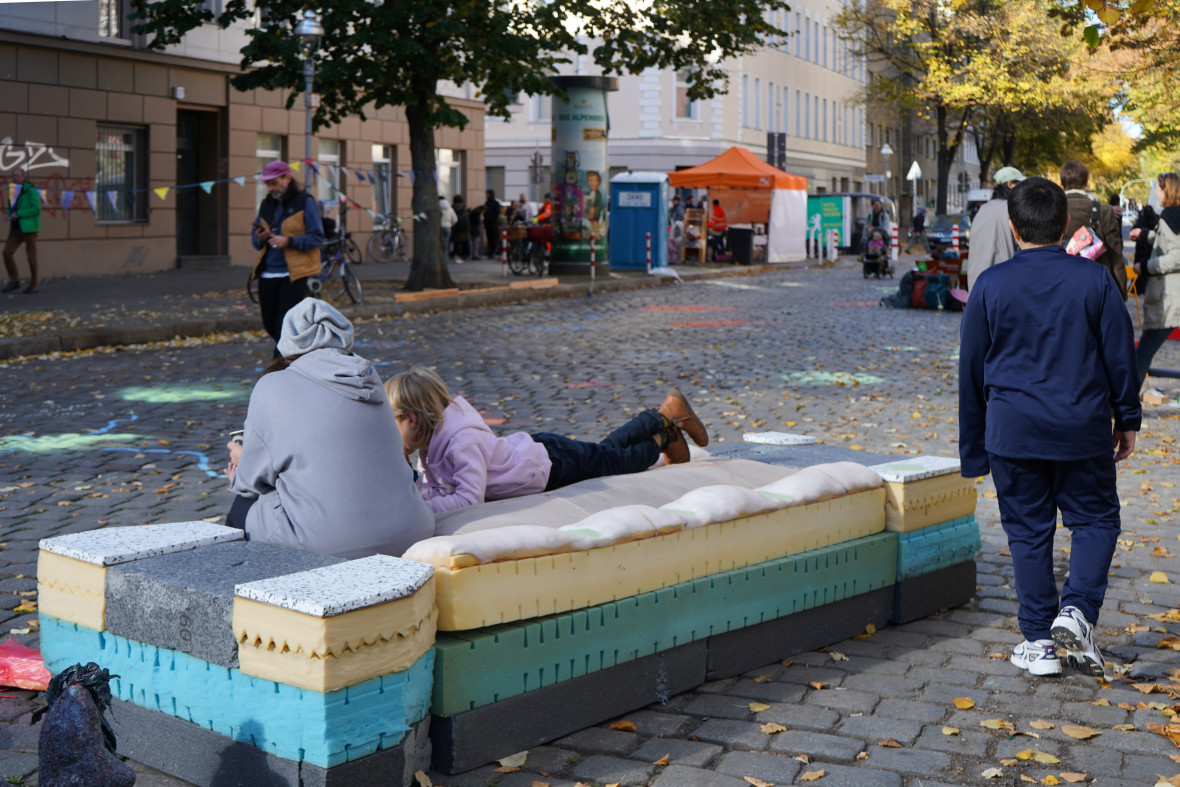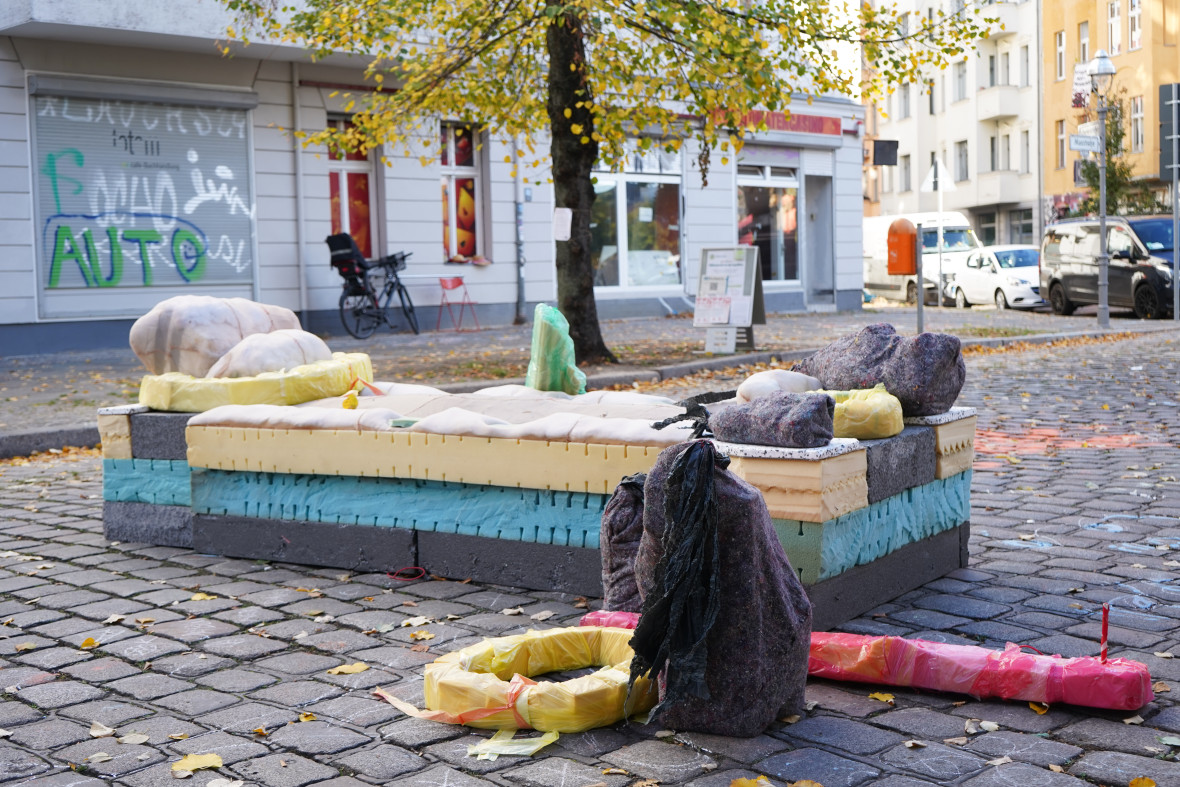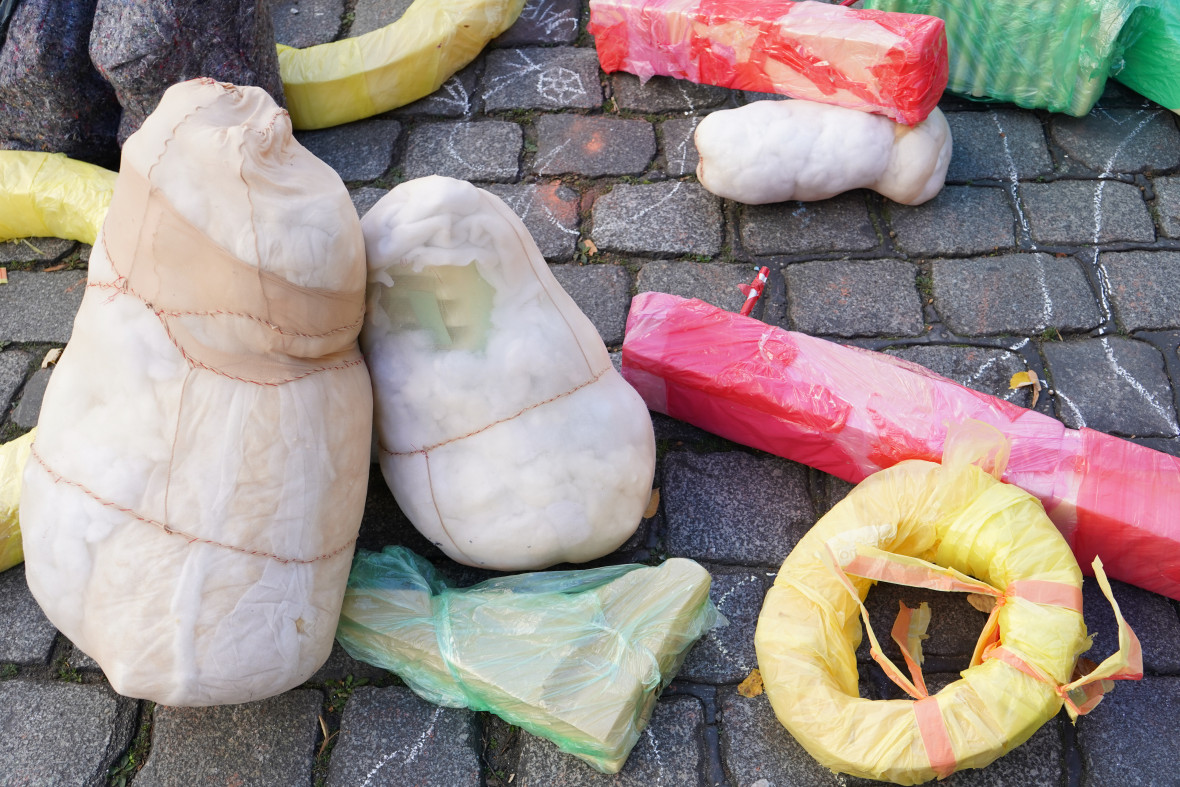Making Participation Tangible
23.10.2025
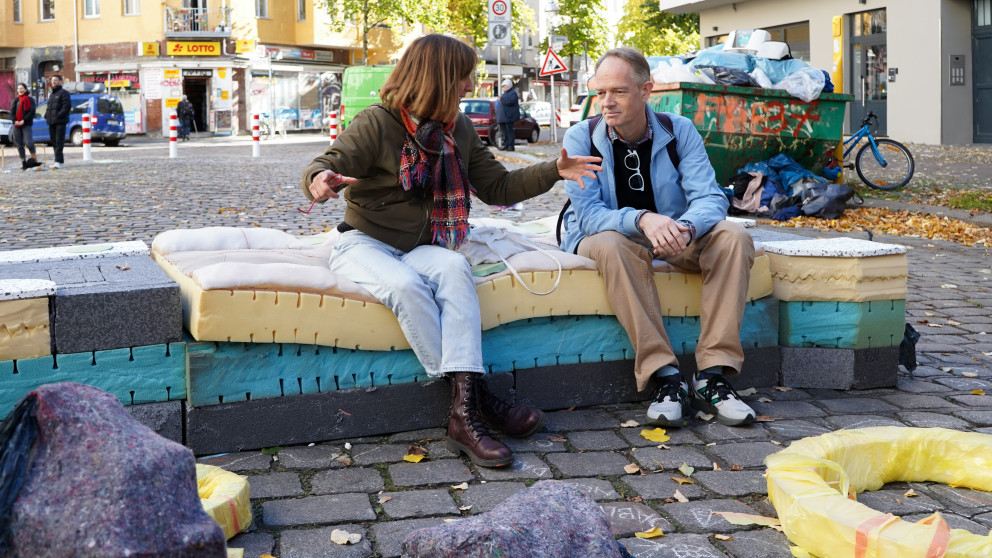
Spaghetti Party in the Antonkiez Neighbourhood
If participation happens exclusively through text and language, are we really reaching everyone? This is the question posed by Art Fellow Julika Gittner, who worked on this topic during her time at RIFS in cooperation with the team from the research project "Neighbourhood blocks as a modular cross-sectoral adaptation strategy to climate change".
What makes this project special is that Julika Gittner, an architect and artist, uses an artistic approach to making information accessible to people: she creates sculptures from recycled materials such as old mattresses, tights, blankets and coloured plastic bags – things that everyone is familiar with from everyday life. Some of these objects serve to convey technical terms that are crucial for people to understand to participate in the redesign of the neighbourhood, such as 'Kiezblock' or 'modal filter'. Others invite interaction to create representations of individual experiences, wishes and requirements for the planned car-free public space.
She recently used this concept in Berlin's Wedding district at the opening of a newly pedestrianised area in Maxstrasse in Antonkiez. Here residents were invited to take a seat on a large scale model of the car-free road made from discarded mattresses and play with objects that represent different requirements and uses for the newly freed-up space.
Media
Julika Gittner über ihr künstlerisches Projekt am Antonkiez
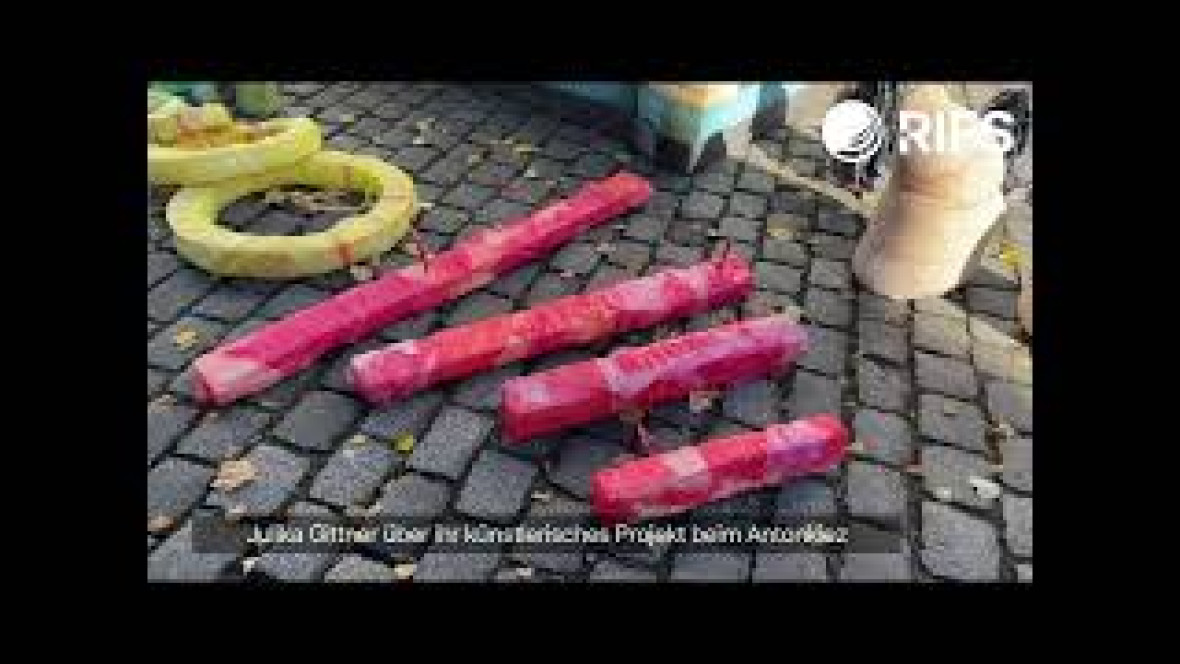
About the neighbourhood: As part of the Kiezblock traffic-calming measures, a section of Maxstraße between Antonstraße and Schererstraße was recently converted into a pedestrian zone using bollards. These so-called modal filters prevent cars from passing through the intersections, thereby increasing traffic safety and creating new traffic-free public space.
About the artist: The research project focuses on developing artistic approaches to engage residents directly in redesigning their neighbourhoods. Julika Gittner's idea is to involve local people in the process through interactive artworks that enable visual and haptic experiences of information and data, in addition to existing consultation formats such as neighbourhood councils and information events. Gittner sees her interactive objects as supplementary means of communication that enable her to address other target groups, such as children and young people, and involve them in shaping their environment.
Gittner collaborated with the Berlin-Mitte district office and the RIFS research group Co-Creation in Democratic Practice during her fellowship to research and test her novel approaches to citizen consultation around traffic calming and climate adaptation. This included the artistic action day 'Wir sind der Antonkiez' (We are the Anton neighbourhood) at the beginning of April 2025, during which Gittner pursued the following action:
Fellow Julika Gittner presented a large-format, interactive sculpture made of different-coloured objects, which invited participants to playfully recreate the flow of traffic from cars, cyclists and pedestrians before and after the planned measure. Four sculptures cut from old mattresses were displayed on the side, showing the city map of the Antonkiez block in the context of the three adjacent neighbourhood blocks (Brüsseler, Sprengel and Malpaquet neighbourhoods).
Image gallery to click through with photos
The experience: The action day in April was planned in collaboration with Sebastian Matthias from the Frankfurt University of Applied Sciences and the Quartiersmanagement Pankstrasse. Three distinct artistic formats by Julika Gittner, the U8 collective and FUAS students attracted attention and invited people to participate and linger. This resulted in opportunities to have longer conversations with people of different ages and backgrounds about their impressions, wishes and problems.
Many participants had not yet heard about the Kiezblock measures, some had detailed prior knowledge, and none had participated in the neighbourhood council. Most of the people we spoke to were interested in participating in the design process, and most could imagine actively contributing to the redesign of the new public spaces in the neighbourhood.
But now back to the spaghetti party in Antonkiez with its long table inviting people to eat and chat. Julika Gittner's sculptures made from recycled materials were a real eye-catcher, and the little ones from the neighbourhood in particular obviously thought they were great and had a lot of fun with them – and, as a side effect, some of them were provided with information, conversations unfolded, and the ability to touch the sculptures sparked a whole new imagination about what change in the local neighbourhood could bring.
